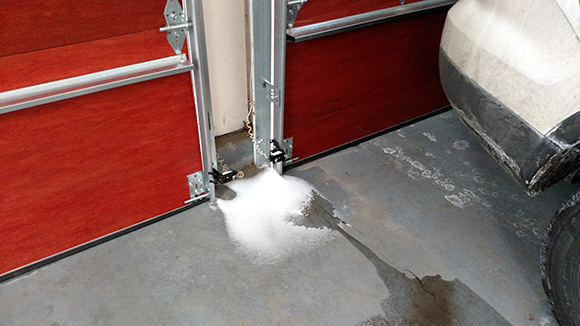How to Stop Air Infiltration in Your Garage





WITH 724 REVIEWS
Click Here To Book Online Now





CLICK
To view local phone numbers

If your garage door is not properly sealed around your door frame, air infiltration can result in heat loss and ultimately eliminate the R-value of your garage door. There are two ways to stop air infiltration and are included in your new garage door installation. It’s important to inspect these regularly to ensure they are still functioning properly.
Weather Seal
Weather seal is the vinyl flap that is placed around the outside frame of a garage door. It helps to stop the air infiltration around the opening of the garage door. It should rest flush on the outer surface of the garage door to prevent any air from entering or escaping around the garage door frame.

During installation, the stop moulding should be nailed every 8 inches and then back caulked to ensure air does not penetrate the door opening. Previously, strips of wood were placed around the edge of the opening to keep air and pests out. So if you currently have just a wood strip, you’ll find that the addition of new weather stripping with a vinyl flap will greatly reduce air flow.

Bottom Rubber
Bottom rubber is applied to the bottom of a garage door to stop air, dirt, bugs, and pests from entering the garage. The bottom rubber is not designed to keep water out of your garage. This issue needs to be addressed through grade issues on your driveway.
A Quality Installation
Because air infiltration is an important issue with garage doors, the company you choose for your garage door installation could make or break your investment.
The installation of your garage door can affect the overall efficiency of your garage door. If your door has air gaps, faulty bottom rubber, and isn’t properly weather sealed, you can experience heat loss. You should talk to your garage door company about their installation standards regarding air infiltration and heat loss.

License
License #120079









